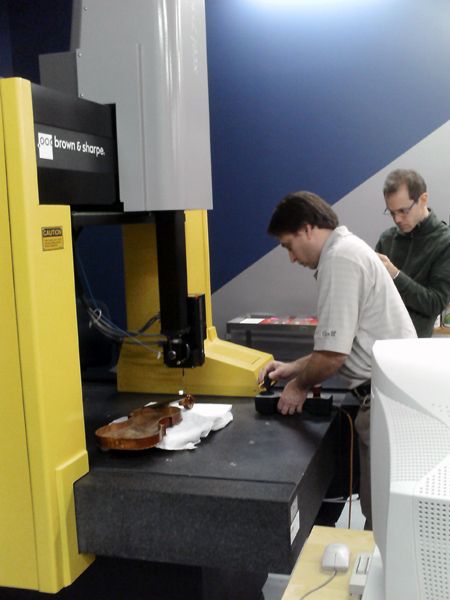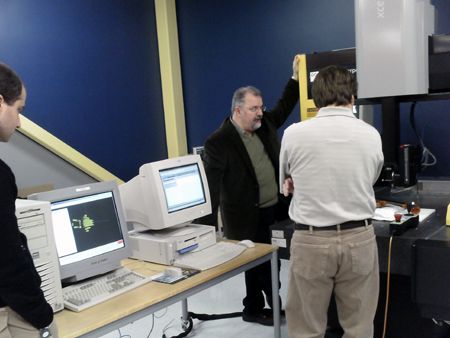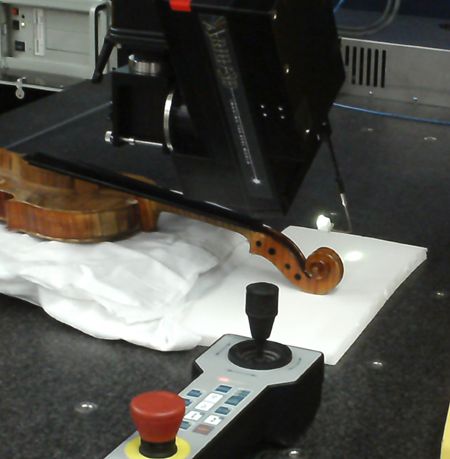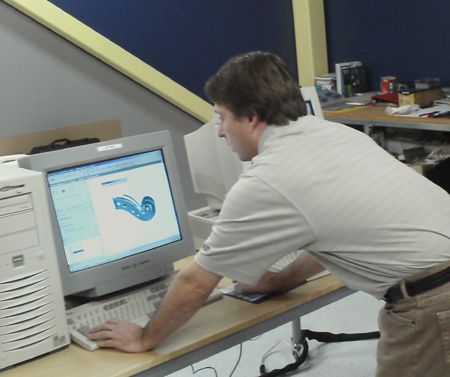This week I visited the Canadian Museum of Nature’s research centre and archive across the river in Quebec. I was there to see a demonstration of their 3D colour laser scanner. With this device, 3D images can be made of almost any object. Once the scans are on the computer, you’re able to rotate the image to view the whole object.
Above Senior Technician, Paul Bloskie is setting up the laser scanner onto the scroll of an old English violin. We brought this violin from the workshop as a test piece. The scanner produces a very precise 3 diminsional record of the violin. With this data and a “3D printer”, a solid composite model can be made. When copying a particular instrument, it’s useful to have a complete exact replica of the violin on the bench. The museum uses this technique to make models for their displays while the actual fossils are kept safe elsewhere. In the workshop at the moment I have many casts of Stradivari and Guarneri violins etc made from plaster and in plastic but this technique would be the next level up.
Above, standing in the centre is Roger Baird, Director of Collections Services at the Museum, who gave us the tour of the lab and museum. On the far left is Alex Tirabasso, 3D Production Assistant. His various work includes using the 3D images and producing animated films for the museum. Paul on the right is watching carefully as the laser moves slowly across the violin scroll.
The scanner is mounted on a huge granite table to avoid any vibration or movement. This keeps the measurements very precise.
Various passes of the scanner are needed to catch all the views around the scroll. These are then fitted together by Paul and the computer.
We didn’t have time to do a complete scan of the violin. As a test we scanned a section of the back of the violin. The reflective varnish is an issue. But by doing it in sections and then blending the best images together, one perfect complete 3D image can be made.
Roger Baird and I hope to see this technology used on fine violins in the future.
(photos by Olivia Walsh-Pelling)




